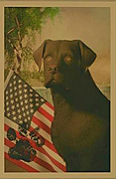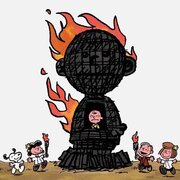- Amp
- Sep 10, 2010
-

|
The Athletic a couple years ago did a really big piece about Negro Leagues stats, primarily focused around Ted Williams not being the last person to hit .400 in a season and it is quite good.
Negro Leagues stats and MLB history: Truth, mythology and the last .400 hitter, By Marc Carig Jan 22, 2021 posted:
In baseball, statistics offer the comfort of order and certainty, though their greatest power is as a proxy for legacy. Mere symbols on a page — 61*, 714, .406 — make it possible to reach back in time and conjure up greatness. That magic is intrinsic to this game. But it had long been denied to the players of the Negro Leagues, whose records were dismissed as too scattered, too fragmented and too scarce to trust. It would have stayed this way if not for an army of volunteers, who spent nights and weekends scouring reels of microfilm and yellowing newsprint, like archeologists in search of lost legacies. That painstaking work, done over the course of generations, led to what was once thought to be impossible.
Major League Baseball announced in December that the Negro Leagues would be conferred status as a major league. The designation effectively sanctioned the rewriting of history, allowing the statistics of Black baseball to be folded into the official record. “They could not have made this decision 10 years ago,” said Scott Simkus, a volunteer who has been part of an effort that has turned up a trove of new statistics. Finally, official credit could be given to feats accomplished on the other side of the color line, before Jackie Robinson came along to erase it.
The power of numbers was evident in the aftermath of the announcement, when fans took to social media to express delight at the prospect of new records. Few resonated more than the mark for highest single-season batting average, a record that would now belong to a Black man, who had been deprived of his full due because of segregation:
Josh Gibson, .441, 1943
Hugh Duffy, .440, 1894
Tip O’Neill, .435, 1887
Apart from the wider discourse, however, a feeling of unease surfaced among those who have done the ground-level work of mining statistics. They know that baseball’s numbers are a messy enterprise, rife with pitfalls, and muddled by competing interests, rivalries, distrust, money, egos and, in this instance, race. Those complications made many wince at the hasty declarations of new records. “That’s the kind of thing that we want to avoid at this point in the process,” said John Labombarda, head of editorial at the Elias Sports Bureau, baseball’s longtime official statisticians. “It’s not that simple.”
Indeed, recognition won’t be as straightforward as making a mashup of the official record. The announcement unleashed a torrent of vexing questions. Among experts, there’s no consensus about precisely which Negro Leagues statistics should be counted, how they should be presented in the records, or even if they should be merged at all. Nor is there clarity about when those critical decisions will ultimately be made, how they will be considered, or even by whom. The possibility looms that a drawn-out, years-long process ends with conflicting accounts of history, stoking concerns that despite its best intentions, MLB may have unwittingly opened a Pandora’s box of thorny dilemmas.
At stake is the statistical legacy of more than 3,400 major league players, all of them Black and Latino, whose existence was ignored for decades in the official record.
“Getting this right is important,” said Phil Dixon, a Black historian who has authored numerous books on the Negro Leagues. “The whole baseball universe is watching. That concerns me — how the Negro Leagues will be portrayed in the future. This will determine it quite a bit.”
That numbers came to define baseball is remarkable considering this: The official record book is strictly metaphorical. It has never actually existed. Through the years, there have been many books of records and historical encyclopedias, some of which were even declared “official” by Major League Baseball. But the sport’s actual official record is a master database maintained by the Elias Sports Bureau, which guards it as if it were the formula for Coke. Any given book of records might choose to defer to Elias’ authority. Or, it might not. That inconsistency is emblematic of baseball’s history with tangled statistics.
“There were various numbers; there was confusion,” said Sean Forman, founder of Baseball Reference. “I think we knew that Ty Cobb was the all-time hits leader, but we might not be able to find one source to give you an exact number of what those were.”
Baseball stumbled through its own statistical dark ages, rife with gaps and discrepancies. No official records of the American League exist before 1905. For a period in the 1910s, the National League recorded win-loss records for pitchers. But the American League did not, because league president Ban Johnson believed them to be a poor judge of a pitcher’s performance. When the RBI became an official statistic in 1920, some scorers did not understand the rule, leading to chaos in the records.
The game’s statistical awakening began in 1969 with the publication of the “The Baseball Encyclopedia,” timed to coincide with baseball’s centennial season. Published by Macmillan, and known as the “Big Mac,” it was as overwhelming in its physical form as it was in its ambition. The 2,337-page tome sought to be the game’s arbiter by smoothing out its statistical inconsistencies. “There were a few record books out there,” Forman said. “But nothing as comprehensive like we got with the ‘Big Mac.’” Researchers scrambled to fill the gaps in the major league record. Though far from perfect, the book laid the foundation for a myth that endures. It became easy to believe in the certainty of the numbers.
What the “Big Mac” didn’t do was acknowledge the existence of the Negro Leagues, as shown by its list of single-season batting average leaders:
Hugh Duffy, .440, 1894
Tip O’Neill, .435, 1887
Ross Barnes, .429, 1876
Black baseball spent much of its existence on tenuous financial footing. Keeping records was costly. Few remained by the time integration hastened the demise of the Negro Leagues, whose teams would be raided for their stars by counterparts in the White major leagues. But the legacy of the enterprise would attract the attention of historians. The early 2000s brought a seminal moment in preserving its history. Larry Lester, a founder of the Negro Leagues Baseball Museum, helped head up a team that worked in conjunction with the National Baseball Hall of Fame to produce a Negro Leagues statistical database. But it was another researcher on that project, one who had played only a minor role, who years later would bring the statistics of the Negro Leagues into the official record.
Gary Ashwill had grown up a baseball fan in Kansas City, Mo., birthplace of the first Negro National League in 1920. That league began a procession of others that would rise and fall over the next three decades. Collectively, they would be known as the Negro Leagues. Ashwill had heard the stories and seen remnants of the statistics. The gaps nagged at him. In the late 1990s, he was completing his graduate studies in English at Duke University, where his work also included race and imperialism in 18th and 19th century America. In the library, he spent his breaks combing through microfilm for box scores. “It turned into this weird hobby where I was just copying all the sports pages for all the Black weeklies,” said Ashwill, who came to lean on titans of the Black press such as the Chicago Defender newspaper. Ashwill later joined Lester’s team. But when the project concluded, he simply continued his research. He has yet to stop.
Reviving baseball history goes beyond simply rummaging for old box scores. There is often no consistency in how information is presented. Key bits of data, such as a hitter’s at-bats or a pitcher’s strikeouts, might be missing. Piecing together an account for a single game often requires multiple sources, some more reliable than others. Published newspaper game stories might be used to fill the gaps, though they’re hardly foolproof. Ink bleeds through paper, names get misspelled, numbers transposed, datelines confused. It is a constant reminder that records are built upon the work of long-ago human beings. They are subject to errors. “That’s a huge part of what I spend my time thinking about,” Ashwill said, “how mistakes can be made by people creating these original records.”
In cases of conflicting information, researchers must lean on experience to make judgment calls. The science is inexact and thankless. But Ashwill learned that his obsession was shared. He began a blog, through which he recruited volunteers to share in the work. By 2011, the group had amassed enough information to present its findings online as the Seamheads Negro Leagues Database.
MLB’s designation covered Negro Leagues that played from 1920 to 1948. For that period, the Seamheads team has unearthed data from 73 percent of all known games. Continuing research will push that number higher. Said Forman: “What Seamheads has done is pretty easily the state-of-the-art in terms of what we should look at it as more accurate or precise Negro Leagues stats.”
The Seamheads team never envisioned that the database would be used to bolster MLB’s attempt to right a historical wrong. “Our goal was to just record history as it occurred,” said Simkus said, who devoted five years to reconstructing the records of the 1943 season. His efforts helped to establish that the great Josh Gibson hit .441 for the Homestead Grays. But the real work may just be beginning.
Even if the Seamheads database is considered the most complete statistical representation of the Negro Leagues ever produced, its insights mean little without context. That can only be gained by stepping into a world that no longer exists, the first half of the 20th century, when baseball was king. The industry that sprouted up around the game encompassed far more than the White major leagues in the Midwest and the East. In the West, the Pacific Coast League approached major league quality. In the rural parts of the country, the expansive minor leagues took root. In cities big and small, scores of factory teams and semi-pro clubs sprang up, giving future professionals a place to start. It was within this lost ecosystem that the Negro Leagues fought for survival.
Systemic racism stood as a barrier to stability. White bankers denied capital to Black entrepreneurs. Maintaining the enterprise required improvisation. For the operators of Black baseball, barnstorming to face White teams often proved more lucrative than playing Black rivals, part of why totals for official league games varied wildly. Teams were considered lucky to approach 100 league games in a given season. The statistics of the Negro Leagues reflect the consequences of that inequality. In modern-day baseball, there is no easy analogue, making attempts at direct comparison deceptive. “It’s jazz compared to classical music,” Simkus said.
Consider Josh Gibson’s 1943 season. According to the Seamheads database, it consisted of 78 games, during which he had 281 at-bats. He’s also listed with no strikeouts, a reminder of the incompleteness of the data. Further inspection of that season reveals that the database includes more than just his league contests:
Homestead Grays: .446, 69 games
Homestead Grays, World Series: .192, 7 games
North-South All-Stars .667, 1 game
East-West All-Stars, .333, 1 game
But if the act of reviving history is a series of judgment calls, the presentation of the numbers was only one of them. “I would never include all-star game and postseason stats in a season record,” said Lester, who is considered one of the most respected voices in the field. Ashwill makes a different argument. In the Seamheads database, he placed a priority on including games as a way to boost sample sizes. The decision was based partly on the nature of the Negro Leagues, where some of the most significant games took place outside of any official league structure. A doubleheader played in a big league ballpark pitting a Black team against a White local club might not count in the standings. But the stakes were high, as it might draw enough fans to keep the business running.
Even official league contests present their own pitfalls. Simkus said it wasn’t uncommon for leagues to shut down when dominant teams ran away with the pennant. Playing out the string would have been a waste of money.
This was the case in 1943, when Gibson’s Homestead Grays cruised to the championship of the Negro National League. After play was suspended, an all-star team was formed to prepare the Grays ahead of their upcoming appearance in the World Series. That hastily formed club is represented in the Seamheads database as the NNL All-Stars, one of two independent teams listed for that season. (The other was the Atlanta Black Crackers. They had been denied full entry to the league because rival clubs did not want to cross the Mason-Dixon line, which forced Black players to retreat to the back of train cars.) The Grays seemed to benefit from the all-star tune-up, winning three of four games. But were those league games or exhibitions? Perhaps more pressing, would Gibson’s results in those contests stand? In the past, historians have counted them both ways, though it’s unclear if they’ll make it into the official record. Said Simkus: “Those games may get thrown out during the audit process.”
What about another memorable game in 1943, this one featuring the great Satchel Paige? The Memphis Red Sox needed a marquee attraction for what could be a big payday — a doubleheader at Wrigley Field. The solution was a one-day arrangement with the Kansas City Monarchs to effectively lease Paige. It would be akin to the Giants borrowing Jacob deGrom for a big series against the Dodgers, another scenario with no modern equivalent. “That was an official game,” Simkus said, recalling Paige’s cameo. “It counted in the standings. You’d lend out the best player in the league because it would put 40,000 people in the stands.” Such creative solutions stand out as an example of the ingenuity required to keep the Negro Leagues running in the face of hardship and injustice. But it may not count in the record.
Some of the most prominent teams in the history of the Negro Leagues did not play in a structured league. John Thorn, MLB’s official historian, likened the landscape to major college football, in which teams like Notre Dame chose to compete as an independent rather than join a conference.
This was the decision made by the 1931 Homestead Grays, a team that scholars consider the Negro Leagues’ answer to the 1927 New York Yankees. “One of the greatest Black baseball teams of all-time,” said Dixon, who has done extensive research on the squad. The Grays featured six Hall of Famers, including Oscar Charleston and a young Gibson. And according to Dixon’s research, the Grays played 174 games that season and posted a staggering winning percentage of .828. The Seamheads database includes independent teams, though it’s hardly a given that they’ll be treated the same within baseball’s official record.
The numbers of the Negro Leagues will bring about a dizzying range of similar dilemmas. Delicate judgment must be made, leaving some scholars to worry about the process. Said Dixon: “There’s a lot of people who are not trusting Major League Baseball in this analysis to be the ones who do this.”
The 2020 season marked the 100th anniversary of the Negro Leagues. MLB had planned a season-long celebration until the pandemic forced some of those plans to be scrapped. But the racial unrest of the summer brought a renewed focus on recognition. Within the league, Thorn took up the cause of officially designating the Negro Leagues as major leagues. The effort gained momentum in August when Ben Lindbergh revealed those discussions in The Ringer. By December, Thorn’s efforts led to MLB’s landmark decision, which served as a bookend to the centennial celebration. For a game that has historically been slow to change, the new designation was made at warp speed. In its press release, MLB hailed the move as “long overdue.” But the process left the league open to criticism.
“I don’t think they had their ducks lined up very well,” Forman said. “I was a little taken aback at how quickly that came out. My assumption would be there might be a blue-ribbon panel sort of thing. And then they just came out and did it. I don’t know what the motivation was for that.”
Baseball framed its decision as correcting the actions of another such panel, one that also came up short. Ahead of the publication of the “Big Mac” in 1969, commissioner William Eckert appointed a five-person Special Committee on Baseball Records. It would serve as an arbiter for statistical disputes. They were all men. They were all White. One of their tasks was deciding which leagues since 1876 would be granted “major league” status. The committee awarded that designation to six leagues. The Negro Leagues weren’t considered. But in keeping with baseball’s unruly statistical history, the commission’s rulings would be contradicted over the years. By 2001, printed encyclopedias were going the way of place-hitting, drag bunts and starting pitchers. But “Total Baseball,” which had become the heir to the “Big Mac,” announced that statistics would be tabulated under the rules of the time they were accumulated. Suddenly, the leaderboard for highest single-season batting average became a tribute to 1887, when walks were counted as hits:
Tip O’Neill .485, 1887
Pete Browning, .457. 1887
Bob Caruthers, .456, 1887
By contrast, when it came to the Negro Leagues, the commission’s declaration seemed to stick. The ruling was seen as enough of a precedent-setter that MLB called it “an error that demands today’s designation.” But that attempt at correction did not come without its own issues. The process lacked outside deliberation, which researchers called a curious move given the complexities of the undertaking. Retrosheet founder Dave Smith cited a lack of transparency. “You have to have some objective, rational, defensible procedure, for deciding what the major leagues are,” Smith said. Ashwill argued that MLB’s designation should predate 1920 since segregation began in the 1880s. “There’s no doubt that a portion of the best baseball talent in the country was kept out of the major leagues,” he said.
Historians who devoted their adult lives to the study of the Negro Leagues found themselves caught off guard by the announcement. “I’ve been fighting this fight a long time,” Lester said. “When the alert came across my desk, I just started to cry. It was a relief — a burden lifted. I was happy that it happened. But there were some tears of sadness that many men that I interviewed didn’t get to see this day.” MLB cited Lester by name for his “decades long research” in the field, a nod to the league’s consultation of his work, though Lester said he was not directly involved before the announcement. Neither was Dixon, a prolific researcher and author who for years has extensively studied the Negro Leagues. “The people who do the work didn’t know,” he said. “The people who wanted to help Major League Baseball get it right didn’t know. They didn’t even get consulted. They got blindsided.”
MLB has faced criticism for senior leadership that is mostly White. Meanwhile, with the exception of Negro Leagues Baseball Museum president Bob Kendrick, prominent Black voices in the field did not factor directly into the discussions leading to the decision. The league declined comment.
“It’s one of those things where you ask, who do you trust to do the best job?” Dixon said. “I just feel like there’s not enough voices talking about this in its entirety. The voices they have now are saying this is great, this is great. I even saw one of the guys say he broke down in tears. I broke down in tears — but probably for the wrong reasons.”
The days following the announcement raised concerns within the research community, which is also mostly White. MLB referenced “a review process to determine the full scope of this designation’s ramifications on statistics and records.” Elias and MLB would take the lead, though they would “work with historians and other experts in the field to evaluate the relevant issues and reach conclusions upon the completion of that process.” A month after the announcement, it remains unclear exactly who would be involved. The league did not specify a timetable for making the changes, perhaps an acknowledgment that the job would be complex. But concerns persist that MLB acted without a full understanding of the fallout. “There are three people in all of MLB that understand any of this,” Smith said. “I think they were doing it in the truest sense out of utter ignorance. Not stupidity — ignorance. They just didn’t know. And they didn’t try to find out.” The consequences could further muddle the game’s relationship with its hallowed numbers.
No sport clings to its statistical mythology quite like baseball. That belief was reinforced in MLB’s approach to the Negro Leagues, which distilled the idea of recognition as inclusion in the official record. Despite their imperfections, numbers remain the currency of legacy in this game. And as with all statistics, the real value lies within the gray. It is in this spirit that the addition of the Negro League’s statistics is viewed as worthwhile, despite the complications. “It opens up more discussions, and that’s what’s good,” Lester said. “It’s what we want.”
Lester grew up in Kansas City, a rabid baseball fan and a loyal reader of The Sporting News, which for decades was known as “the bible of baseball.” Its pages treated the Negro Leagues as if they did not exist. “But I knew better,” Lester said, “because the Black men that I lived with in the neighborhood were retired ballplayers, so I had a different perspective.” He went to high school with Paige’s daughters and played basketball with his oldest son. His second grade teacher was Ora O’Neil, wife of the legendary Buck O’Neil. Lester acknowledges the perils that come with comparisons. For instance, Gibson’s .441 average in 1943 was posted in just 78 games, roughly half a full season in the White major leagues. But Lester argued that the difference matters less than the story revealed by the discrepancy. He spoke of using “mental asterisks” when weighing the combined statistics, a practice that he said is already common when considering the home runs hit during the Steroid Era.
Merging the numbers might change perceptions, including one that persists about Negro League statistics being hopelessly disorganized. Simkus has railed against that notion for years, noting that the whole of baseball’s records have always demanded further inspection. “What does Cap Anson’s statistics mean?” Simkus said, referring to the 19th century star and booster of the color line. “They were pitching underhand from 50 feet away for a large part of his career. We slam all that stuff in and pretend that this is kosher. We’ve just forgotten how weird it is to have underhanded baseball stats in the same place as Mickey Mantle and Mike Trout. But we do.”
Indeed, the presentation of baseball’s records have always been subject to revision. Hugh Duffy last stepped into the batter’s box in 1906. But in the past 50 years, he has gone up and down on the all-time single-season batting average list. For now, Baseball Reference has him back on top:
Hugh Duffy, .440, 1894
Tip O’Neill, .435, 1887
Ross Barnes, .429, 1876
Records evolve, though in the case of the Negro Leagues, the significance of inclusion goes far beyond creating an artificial sense of order. It is a clear response to inequity. “You say this is our response to this massive historical injustice,” Ashwill said. “We’re going to do this because it’s the right thing to do, and this is now our history. We’re going to go from here and figure out what that history means. It creates pressures to face these questions. It brings them forward and makes us think about them.”
But another camp has emerged, one that worries about unintended consequences. Dixon is among those who fear that the feats of legends may now appear diminished in the official record. He notes that the Seamheads database credits Gibson with 238 homers, a number could be even lower depending on how many of his games are deemed official. “That’s not going to show who Josh Gibson really was,” Dixon said. “There’s ways that this story needs to be told. I think that people think that these statistics are going to be the end all be all. I think they’re probably going to be gravely mistaken. I’m an African American who loves writing about this topic. I don’t need Josh Gibson to be mixed in with Ted Williams to be able to tell my story.”
Blending the statistics, ESPN’s Howard Bryant argued, could also serve as a method for baseball to obscure its role in the systemic oppression of the Negro Leagues. And though the incompleteness of the numbers might encourage deeper discussions of their meaning, it could also cast doubt on the rest of the official records. The numbers that have provided the comfort of order and certainty could be dismissed as too flawed to carry any gravity, even among those who accept that such a notion is partly an illusion. “I worry that if there’s too much skepticism, and too many attacks launched, then that discredits the whole thing, it discredits all record keeping,” Smith said. “I worry about that.”
Within the research community, where opinions are strong, consensus may prove to be elusive. Some have even raised questions about the Seamheads data itself. Dixon, who has spent years working with the numbers, said that his own research on the ’31 Grays “doesn’t match anything that they have out there.” Also lacking is publicly available day-by-day data, which Smith said, “does not enhance the credibility of their final numbers.”
Day-by-day numbers exist, though Ashwill said that the Seamheads team must first develop a consistent format to present them. It hadn’t been a priority. That has changed since MLB and Elias will need the information for its review of the data. “It bears repeating that the Seamheads database is a work in progress,” Ashwill said, sounding a reminder that seemingly applies to the entire process.
In 1961, the notorious asterisk on Roger Maris’ 61 home runs never actually existed, partly because there was no official record book to adopt it. Babe Ruth hit 714 lifetime home runs until 1969, when the special records commission cited new research that raised the total to 715. The change lasted one week, undone by outcry from a public that saw comfort in the illusion of numbers. Indeed, as Thorn once wrote, baseball’s statistical history has been “gloriously messy.” The addition of the Negro Leagues’ statistics into the record will be no exception.
Officially, the Elias Sports Bureau will play a central role. During its review, Labombarda said that Elias will “put a lot of trust into the work that the people that have been doing this for years have done.” He said the company has already engaged in preliminary discussions with Seamheads, the start of what he expects to be a lengthy process. “The records that could be broken could be endless,” he said. “I know we want to give the proper respect to the Negro League players. I’m sure they’re going to be open and receptive to anything we bring to them. But we also want to respect the players that we all know already as well.”
Unofficially, it’s more complicated.
Despite its standing, researchers have long harbored a distrust of Elias, stemming from what they say is a tendency to put business interests ahead of research and history. Forman called the company “pretty much a black box,” because it rarely shares internal data. “They make their money not by serving millions of baseball fans but by serving like 50 customers,” he said. “It’s in their interest, as I would understand their business model, to keep it close to the vest.” Smith recalled instances of Elias making official changes to career totals, while rebuffing inquiries about which specific games led to the revisions. “The fact that we just don’t give our data away, the information that we worked very hard to compile, might cause some friction,” Labombarda said in an email. “The integrity of the numbers are very important to us.”
On its Twitter feed, the company touts its role by displaying the slogan, “If it ain’t Elias, it ain’t official.” But Smith has long contended that the concept of “official” is “profoundly misunderstood by basically all of the general public and, frankly, by an awful lot of sportswriters.”
“‘Official’ has been translated as truth,” Smith said. “That’s the official record, therefore God ordained it and it is officially true. I’m being a real pain in the rear end here. But when you look at the word ‘official,’ it means ‘from the office.’ It is a statement of authority from someone seen as having the ability to make that statement. So, the major leagues are an authority. If you believe in their authority, then those are the official numbers and you’re going to use them. If you don’t believe in their authority, then you’re not going to use them. But equating ‘official’ with ‘true’ is going to get you only into trouble.”
The league’s own website, for instance, breaks from Elias. It does not list players from leagues that no longer exist, so its single-season batting average leaderboard excludes Tip O’Neill, a veteran of the long-defunct American Association:
1. Hugh Duffy .440, 1894
2. Ross Barnes .429, 1876
3. Willie Keeler .424, 1897
In the case of the Negro Leagues, Baseball Reference may have the biggest impact on how the records are viewed. Unlike Elias, it is not official, though that may not matter. The site is visited by millions of fans every day, solidifying its stature as the successor to the “Big Mac” and “Total Baseball.” It has been working toward an agreement with Seamheads to present the database, giving the Negro Leagues a recognition that has long been denied, well ahead of any inclusion in the official record.
Ted Williams hit .406 in 1941. Years later, when he made the Hall of Fame, he devoted his speech to the inclusion of Negro Leagues stars. “I hope that someday the names of Satchel Paige and Josh Gibson in some way could be added,” said Williams, whose advocacy eventually helped throw open the doors to Cooperstown. In 2002, the headline above Williams’ obituary in the New York Times summoned the magic of the game. It referred to him as “baseball’s last .400 hitter,” thus distilling his legacy with a single figure.
If Baseball Reference takes the Seamheads data as presented, and Gibson’s .441 average in 1943 stands, it would make him, not Williams, the last major leaguer to hit .400.
Would that be any less true if it’s not official?

(Cleveland Buckeyes of the Negro National League circa 1947)

(Josh Gibson in 1940)

(Josh Gibson statue at Nationals Park in Washington, D.C.)

(Buck O’Neil in 2006)

(Satchel Paige and Josh Gibson in 1941)
|









































